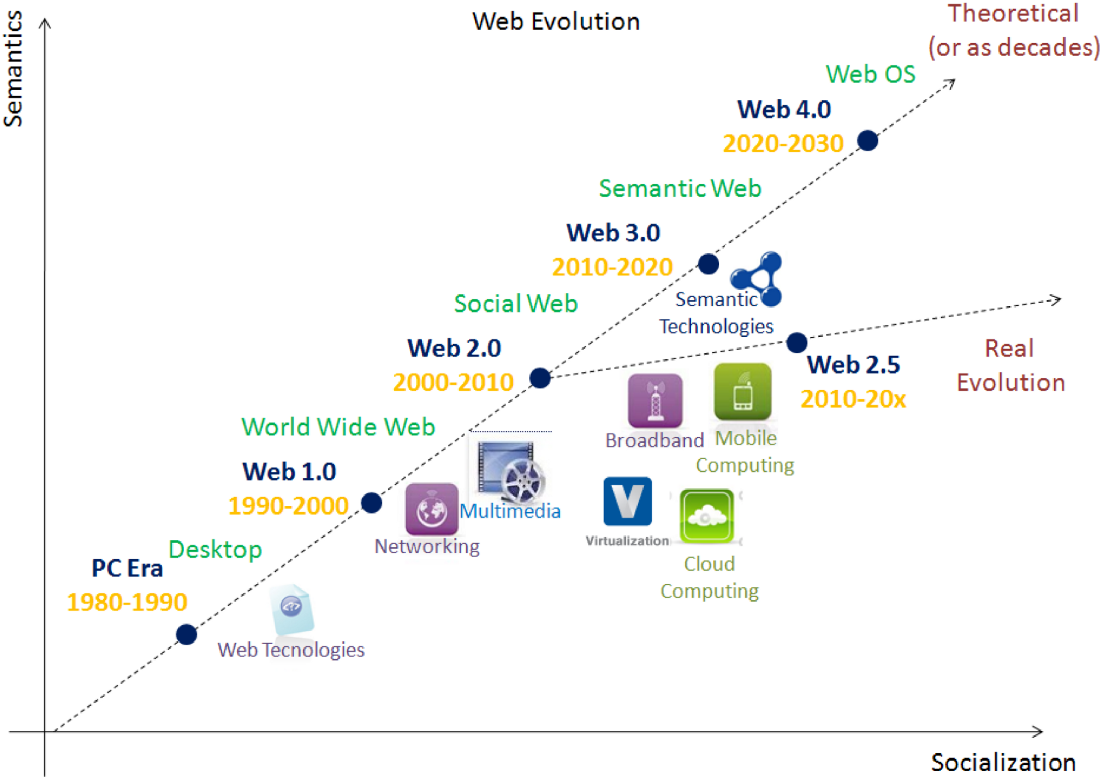The vocabulary of the digital era is unique, comprised of a confusing variety of buzzwords, abbreviations, and many more terms that are just as likely to confound as to educate.
Even though we don’t understand the meaning behind them, these terms have become a part of our everyday vocabulary. For example, the terms “Web” and “Internet” are two different concepts. However, the majority of people mistakenly use them interchangeably.
In this article, we will explain what the Internet is and the differences between Web 1.0, Web 2.0, and Web 3.0.
What Is The Internet?
The Internet is the framework or technological base upon which the Web is built. In essence, the Internet is a huge network of linked computers that communicate with one another.
It’s unclear exactly where the Internet came from. With the help of numerous public institutions and business entities, it started as a research project funded by the US Army in the 1960s and became public infrastructure in the 1980s. Although the different Internet technologies have evolved over time, their fundamental operation has largely not altered. Computers are connected via the Internet, which enables constant communication between them.
What is Web 1.0?
Berners Lee oversaw the early creation of the Internet in 1990 while working as a computer scientist at the European research facility CERN.
He created his first web page editor/browser, one of the three key technologies that served as the foundation for the Web, in October 1990. HTML is the name of the formatting language used by webpages.
A URI or URL, commonly referred to as a Uniform Resource Identifier or Locator, is a particular address used to identify a resource on the Internet. You may find pertinent information on the Internet using the HyperText Transfer Protocol or HTTP.
Midway through the 1990s, Web browsers like Netscape Navigator were released, ushering in the Web 1.0 era. The complex content that is now the industry norm was not present when statistics webpages were downloaded from servers back then. Most Internet users at the time were eager to try out new functions like e-mail and real-time news searches.
Because content generation was still in its early stages, users had limited access to interactive apps. However, this position has altered as internet banking and trade have gained popularity.
What Is Web 2.0?
A paradigm shift in how people utilize the Internet is described by the term “Web 2.0.” In the past 15 to 20 years, Web 2.0’s interactivity, social connections, and user-generated content have completely replaced the uninteresting web pages of Web 1.0.
Web 2.0 has enabled millions worldwide to instantly see user-generated content digitally. The exponential growth of Web 2.0 has been facilitated by significant innovations like social networks and mobile internet access, as well as the practically universal availability of powerful mobile devices like smartphones running the Android operating system and iPhones.
e tremendous revenue growth of these platforms, several Web 2.0-focused businesses, like Apple, Amazon, Google, Meta (formerly Facebook), and Netflix, are among the biggest in the world by market capitalization.
What is Web 3.0?
The next phase of the growth of the Internet and the Web, known as Web 3.0, has the potential to be just as disruptive and usher in a major paradigm shift as Web 2.0 was. Web 3.0 is built on decentralization, openness, and enhanced user utility principles.
Below is an illustration of how Berners-Lee developed several of these core concepts in the 1990s. Decentralization: Nothing needs to be approved by a central authority in order to go online. There is no single point of failure or kill switch since there is no central control node.
Bottom-up design: The code was created in front of everyone, enabling maximum involvement and experimentation, as opposed to being written and overseen by a limited group of specialists.
In a 2001 article, Berners-Lee introduced the concept of what he dubbed the Semantic Web.
Language semantics cannot be reliably processed by machines. Berners Lee’s concept for the Semantic Web aimed to give websites a meaningful content structure and provide automation the ability to carry out difficult jobs for people.

Differences Between Web 1.0, 2.0, and 3.0
| Web 1.0 | Web 2.0 | Web 3.0 |
| Mostly Read-Only | Wildly Read-Write | Portable & Personal |
| Company Focus | Community Focus | Individual Focus |
| Home Pages | Blogs/Wikis | Lifestreams/Waves |
| Owning Content | Sharing Content | Consolidating Content |
| Web Forms | Web Applications | Smart Applications |
| Directories | Tagging | User Behavior |
| Page Views | Cost per Click | User Engagement |
| Banner Advertising | Interactive Advertising | Behavioral Advertising |
| Britannica Online | Wikipedia | The Semantic Web |
| HTML/Portals | XML/RSS | RDF/RDFS/OWL |
Takeaways
- The Web’s supporting framework, or technological foundation, is known as the Internet.
- The Internet connects computers and ensures that they can still communicate with one another no matter what happens.
- The debut of web browsers in the middle of the 1990s marked the beginning of the Web 1.0 era.
- Web 2.0 describes a paradigm change in how people use the Internet.
- The fundamental ideas of decentralization, openness, and increased consumer usefulness form the foundation of Web 3.0.
- Web development will become more efficient and easier to use as it will change the entire design process for website design companies.